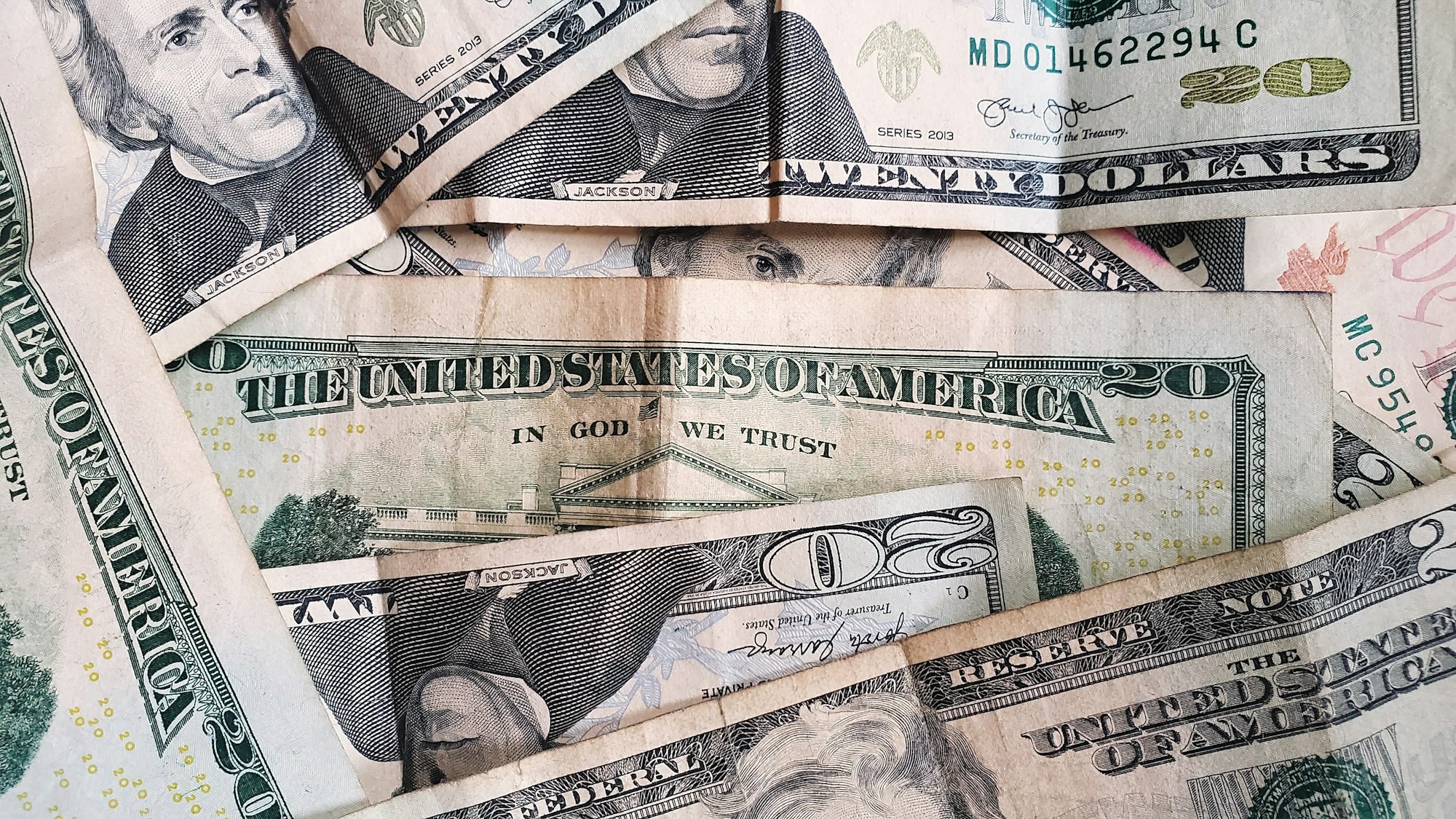Understanding Market Liquidity through TGA, RRP

In the world of TGA (Treasury General Account), RRP (Reverse Repurchase Agreement), Treasury, and Bank Reserves, liquidity in the equity market refers to the availability and ease of trading equity securities, such as stocks, in the market.
Let's simplify these big-money words into everyday language. When referring to entities such as TGA, RRP, the Treasury, and Bank Reserves, we are examining the ease of executing stock purchases and sales that we term "liquidity" in the stock market.
Here's how these pieces fit together:
TGA (Treasury General Account)
An essential aspect of government finance is its checking account with the Federal Reserve. Designated explicitly for monies gathered through payment of taxes or solicitation of loans, it is from this fund that disbursements are made whenever governmental expenditures arise.
RRP (Reverse Repurchase Agreement)
This is a tool the Federal Reserve uses to manage interest rates and the amount of money available in the financial system. It's like a pawnshop transaction. The Federal Reserve pawns Treasury securities to banks and money market funds with the promise to repurchase them later. This process temporarily removes money from the banks, reducing the overall money supply.
Treasury
The Treasury is like the government's borrowing department. It issues IOUs, such as Treasury bills, notes, and bonds, to borrow money. These IOUs are reliable and easy to trade, so they're watched closely as a guide for other interest rates.
Bank Reserves
To ensure preparedness for unforeseeable circumstances, banks keep reserves at the Federal Reserve as part of their financial planning approach. These contingency funds act as an emergency piggy bank when needed most. The specific level of reserves required is determined by regulatory compliance standards and total deposit balances held by each institution. Once reserved levels are adequate, it amplifies seamless interbank transactions while aiding commercial loan capabilities between various institutions within the national economic spectrum.
So, how do these parts affect how easy it is to buy and sell stocks?
TGA and Bank Reserves
The current financial system reinforces a linear effect; governments' withdrawal from their checking accounts inevitably curtails bank reserves. This scenario directly dampens their readiness toward lending schemes and influences fluctuations while trading stocks in capital markets across borders. To counterstrike these effects positively with interventions aimed at boosting market activity, depositing monies into these accounts helps build more robust banking platforms with adequate financial imprints necessary for stabilizing investor confidence through seamless trade exchanges required for buying and selling high-value bonds on international fronts.
RRP and Bank Reserves
It's essential to recognize that when conducting an RRP or reverse repo transaction, there are consequences for bank lending capabilities and stock market stability. The reason is that Treasury securities get taken out of participating institutions by the Federal Reserve with this move, consequently reducing their resources which could impact equity trading activities negatively. However, when repurchased by the Fed later - put, repurchasing these items - it leads to increased monetary flow back into partner banks. As a result, they benefit from more substantial positions allowing for streamlined activity, including stock purchase transactions.
Treasury Securities
Providing simple accessibility for traders, Treasury Securities set a standard of safety and stability when investing. Any upsurge in their corresponding interest rates might discourage potential orientation toward stocks, making the trading process uncertain. On the other hand, if these IOUs experience a drop in their rate of return, then shares become more desirable due to comparative ease when it comes to exchanging.
How easy it is to buy and sell stocks depends on a few things, like the money flowing in and out of the government's checking account, the Federal Reserve's pawn shop transactions, and how it manages bank reserves, as well as the trading and interest rates of government IOUs. These parts work together and determine how easily stocks can be traded.
Scenarios - Rise & Fall of Equity Market
Scenario: Increase in TGA Deposits and Bank Reserves
Explanation: Through regular cash injections from Treasury accounts to TGA accounts, we see an influx that creates sizeable increases within bank reserves, potentially positively affecting both banks and equity markets. For instance: With larger capital due to these increased reserves, banks may have greater resources available, which they could then lend or use for providing liquidity towards equity markets, thereby stimulating higher demands across various industries.
Impact on Equity Market: This resultant surge carries possible impacts such as greater than expected increases in trade volumes or even rises within individual stock buying or selling per unit values, consequently reflecting an improved performance index or general upward momentum across related financial sectors, respectively.
Scenario: Decrease in TGA Withdrawals and Bank Reserves
Explanation: It is essential to remember when Treasury alters its withdrawal pattern and reduces its frequency or amount from TGA. It impacts bank reserves and results in decreased liquidity. This lack of liquidity has potential negative consequences for equity markets.
Impact on Equity Market: By decreasing bank reserves, banks cannot provide enough funds to facilitate lending and liquidity in the equity market. This drop in financial resources can consequently reduce demand for equities, fulfilling potentially devastating consequences like stock price declines and weakened market performance.
Scenario: RRP Operations Absorbing Excess Liquidity
Explanation: The Federal Reserve conducts a series of RRP operations to absorb excess liquidity from the banking system. This absorption of liquidity can have a negative impact on the equity market.
Impact on Equity Market: As the Federal Reserve removes funds from bank reserves through RRP operations, banks have fewer resources to provide liquidity to the equity market. The reduced availability of funds may decrease demand for equities, potentially leading to a decline in stock prices and overall market performance.
Scenario: Unwinding of RRP Operations and Injecting Liquidity
Explanation: The Federal Reserve's latest action involves unwinding its RRP operations and injecting liquidity into bank reserves instead. Market experts predict this could have a positive effect on the equity market.
Impact on Equity Market: By making funds available for lending and increasing liquidity in the equity market, the Federal Reserve empowers banks to boost demand for equities. This can ultimately result in an upward trend in stock prices and overall market performance.
Scenario: Treasury Securities Yields and Investor Sentiment
Explanation: The yields on Treasury securities decrease, indicating lower interest rates and potentially increased demand for equities. This shift in yields can have a positive impact on the equity market.
Impact on Equity Market: When Treasury yields decrease, equities may become relatively more attractive to investors seeking higher returns. This increased attractiveness can lead to higher demand for equities, potentially driving up stock prices and overall market performance.
Scenario: Increase in Treasury Issuance and Crowding Out Effect
Explanation: The Treasury significantly increases the issuance of new Treasury securities to finance government expenditures. This increase in supply can have a negative impact on the equity market.
Impact on Equity Market: A substantial increase in Treasury issuance can absorb a significant portion of available funds in the financial system. This crowding-out effect may lead to reduced liquidity for equities, potentially resulting in a decline in stock prices and overall market performance.
These scenarios illustrate how the interplay of TGA, RRP, Treasury, and Bank Reserves can influence liquidity conditions and investor sentiment, ultimately affecting the equity market's performance. It's important to note that these factors interact with numerous other variables, and a wide range of economic and financial dynamics can influence the actual market outcomes.
Understanding the dynamics of equity market liquidity and how TGA, RRP, Treasury, and Bank Reserves impact it is a very technical study requiring years of experience. Stanzie Benz has mastered the art of market liquidity.
Frequenty Asked Questions
How the Treasury General Account (TGA) and Reverse Repurchase Agreements (RRP) shape market liquidity and impact the equity market?
The Treasury General Account (TGA) and Reverse Repurchase Agreements (RRP) are two mechanisms that can shape market liquidity and impact the equity market. Here's how they work:
Treasury General Account (TGA)
- The TGA is an account held by the Treasury at the Federal Reserve.
- When the Treasury receives payments, such as from corporate taxes, it is draining reserves from the banking system.
- The TGA has become more volatile since 2015, reflecting a decision by the Treasury to keep only enough cash to cover one week of outflows. This has made it harder for the Fed to estimate demand for reserves.
- These rules may have led banks to hold on to reserves instead of lending them in the repo market.
Reverse Repurchase Agreements (RRP)
- In a reverse repo transaction, the Federal Reserve sells securities to a counterparty subject to an agreement to repurchase the securities at a later date. Reverse repo transactions temporarily reduce the supply of reserve balances in the banking system.
- The Overnight Reverse Repo Facility (ON RRP) helps provide a floor under overnight interest rates by acting as an alternative investment for a broad base of money market investors when rates fall below the interest on reserve balances (IORB) rate.
- The Standing Repo Facility (SRF) serves as a backstop to dampen upward interest rate pressures that can occasionally emerge in overnight U.S. money markets.
- The Federal Reserve uses repos and reverse repos to conduct monetary policy. When the Fed buys securities from a seller who agrees to repurchase them, it is injecting reserves into the financial system. Conversely, when the Fed sells securities with an agreement to repurchase, it is draining reserves from the system. Since the crisis, reverse repos have taken on new importance as a monetary policy tool.
The TGA and RRP can impact market liquidity and the equity market by affecting the supply of reserves in the banking system and influencing interest rates.
Citations:
https://www.brookings.edu/blog/up-front/2020/01/28/what-is-the-repo-market-and-why-does-it-matter/
https://www.newyorkfed.org/markets/domestic-market-operations/monetary-policy-implementation/repo-reverse-repo-agreements
How does the TGA impact the availability of reserves in the banking system?
The Treasury General Account (TGA) affects the availability of reserves in the banking system through various means. Firstly. An increase in TGA balance decreases the overall supply of reserves within the banking system. And conversely. A decrease in TGA balance leads to an increase in overall supply. It's worth noting that the TGA has grown increasingly volatile since 2015. The Treasury only kept enough cash to cover one week of outflows. This has made it more challenging for the Fed to assess reserve demand accurately.
The potency of the TGA lies in its ability to affect reserves within a financial system - consequently, as its size increases. It leads to lower liquidity outside of its confines. Simultaneously as people or businesses receive checks from the government and deposit them at commercial banks, money flows from the TGA into their Fed accounts. This adds to commercial banks' reserve balances and consequentially affects short-term interest rates.
To reiterate. Given that it facilitates key US government operations. We must note how changes in TGA balance can significantly impact overall reserve supply, leading to fluctuations' impacts on short-term rates.
Citations:
https://www.bostonfed.org/-/media/Documents/Workingpapers/PDF/2018/cpp1801.pdf
https://www.fticonsulting.com/insights/articles/whats-next-treasury-general-account
https://www.babypips.com/forexpedia/treasury-general-account
https://fedguy.com/the-treasury-is-dumping-800-billion-out-of-the-tga-and-its-nbd/
https://www.federalreserve.gov/econres/notes/feds-notes/fiscal-flow-volatility-and-reserves-20191216.html
What is the impact of a decrease in short-term interest rates on the economy?
Short-term payments play a significant role in shaping economic outcomes; when reduced significantly, it affects how people borrow money and invest.
Lowering short term-interest rates enhance the accessibility of funds at relatively low costs for consumers and companies alike- an act that may trigger increased market activities with higher prices favoring investors too. However, it should be noted that decreasing these payment terms could result in undesired repercussions, e.g., inflation alongside liquidity traps.
Globally, lenders rush to access this reduced payment mode, causing reduced lending operations momentarily. Nevertheless, capital spending by corporations is highly encouraged in the long run while customers increase their daily expenses with lasting positive impacts on market equilibrium.
Citations:
https://www.investopedia.com/articles/stocks/09/how-interest-rates-affect-markets.asp
https://www.investopedia.com/articles/investing/010616/impact-fed-interest-rate-hike.asp
https://www.studysmarter.us/explanations/macroeconomics/financial-sector/short-run-interest-rate/
https://www.stlouisfed.org/en/publications/regional-economist/october-2010/low-interest-rates-have-benefits--and-costs
https://www.usbank.com/financialiq/invest-your-money/investment-strategies/how-do-interest-rates-affect-investments.html
How do changes in short-term interest rates affect investment decisions by businesses?
Businesses need to consider how shifting quick-interest rates impacts their investment strategies thoroughly. While some surveys demonstrate that these monetary moves may not always sway an investor's decision-making process, organizations must keep tabs on such change dynamics nonetheless.
Interest rate fluctuations could substantially elevate or lower borrowing costs concerning investments' good prospects for aspiring entrepreneurs from varying industries. Both high and low-interest rates have unique pros and cons based on how individual businesses plan to move ahead.
Suppose interest rates surge upward- banks can charge businesses more for loans borrowed from them. This complicated business approach is likely to shave off profits earned by firms through added loan interest expenses. As a result, they may look to put new projects or expansions on hold until rates become more favorable again, giving them financial stability in the meantime.
Alternatively, firms might be more eager to invest in machinery upgrades and add infrastructure when interest rates are low. This is an excellent opportunity for equipment salespeople and construction services providers looking to do brisk business during such bountiful times.
Central bank cuts quick-interest rates- indicates new spending by enterprise—such outlays potentially drive economic growth, which equals the long-term benefits the economy desires.
Investors typically with diversified portfolios would notice immediate effects as short-term impacts occur due to fluctuations of quick-interest rate changes as they don't directly impact lengthy-term investment propositions unless compounded across longer tenures through various factors.
Therefore it's intuitive that prompt movement on quick-interest rates directly reshapes companies' bottom lines as their borrowing costs radically alter, subsequently affecting investments' overall lucrativeness.
Citations:
https://www.rba.gov.au/publications/rdp/2018/pdf/rdp2018-05.pdf
https://sgp.fas.org/crs/misc/IF11020.pdf
https://smallbusiness.chron.com/effect-interest-rates-business-69947.html
https://www.stlouisfed.org/en/publications/regional-economist/october-2010/low-interest-rates-have-benefits--and-costs
https://www.usbank.com/financialiq/invest-your-money/investment-strategies/how-do-interest-rates-affect-investments.html






Comments ()